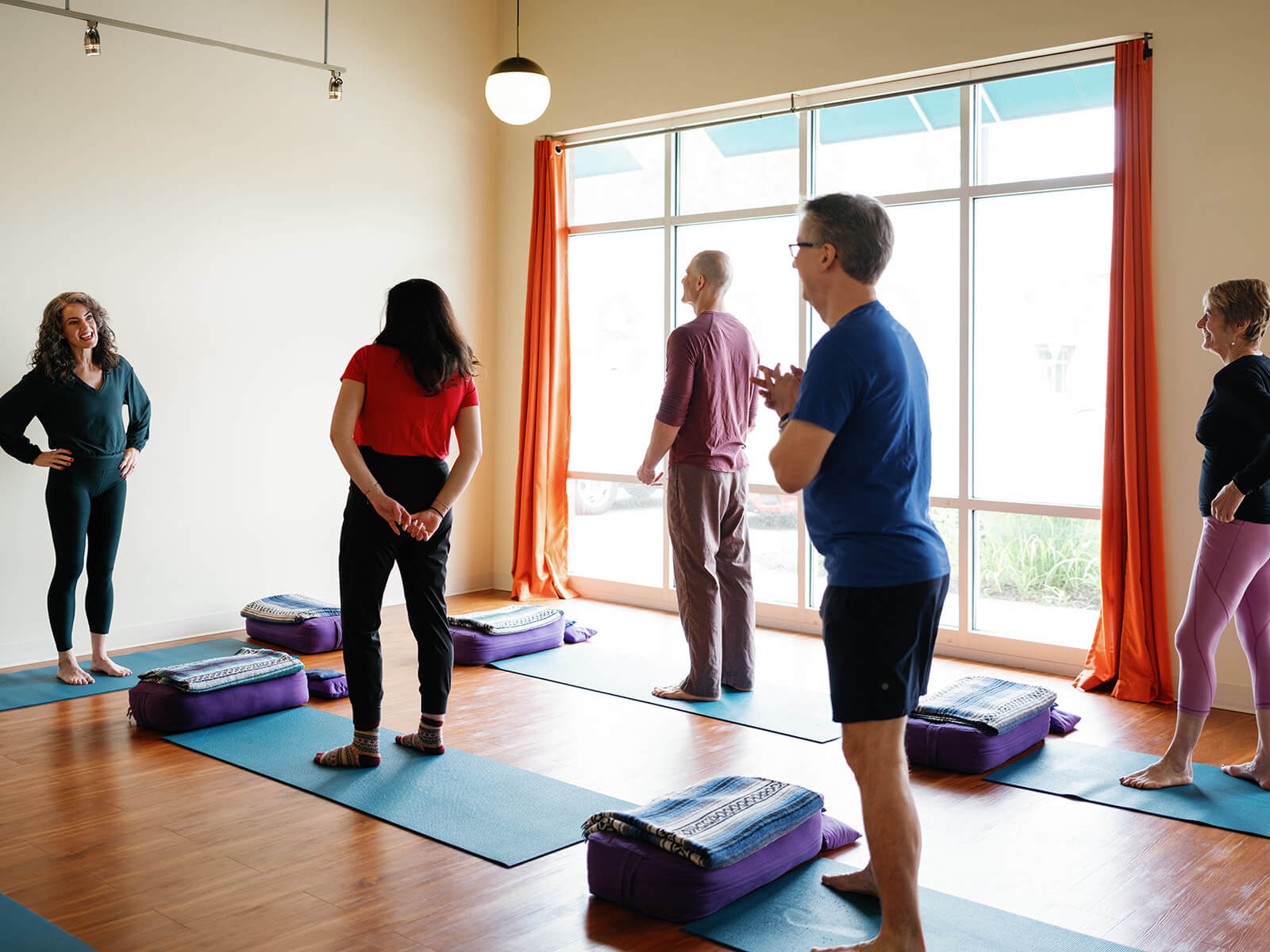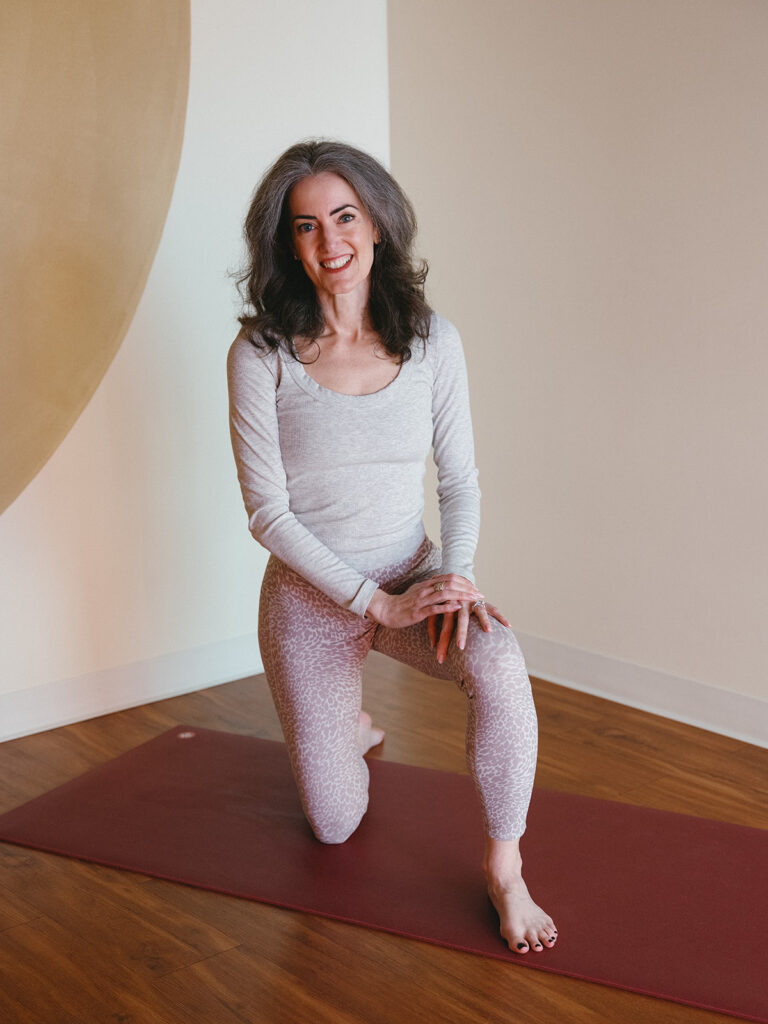Why Community Is the Hidden Ingredient in a Great Yoga Class
As yoga teachers, we spend a lot of time thinking about our sequences, our cues, and our playlists. But the single most powerful thing you can cultivate in class? A sense of community.
When students feel seen, supported, and connected—not just to you but to each other—they keep coming back. Their practice deepens, and your teaching becomes more fulfilling. And the best part: you don’t need to be a social butterfly to create it.
Let’s explore practical ways to foster community in your classes—before, during, and after practice. These methods are subtle, inclusive, and adaptable to any teaching style or setting.
This is also the topic of Yoga Teacher Confidential, episode 46.
Before Class: Set the Tone for Connection
The best community building starts before class even begins. Here’s what that can look like:
- Arrive Early: Show up 15–20 minutes ahead of time so you can greet students individually. Your calm, present energy will shape the room before you even say a word.
- Use Names: Learn and use your students’ names. If you’re bad at names, create a system: jot them down with identifying notes, like “purple mat, nurse, loves child’s pose.”
- Facilitate Introductions: Introduce new students to regulars. “Sam, meet Maria—she’s a runner too.” Simple icebreakers build instant rapport.
- Design for Interaction: Set up your room so students naturally gather near props or wait in shared spaces. Create opportunity for casual conversation.
- Set an Intention: Quietly decide on a community-building goal for the class. It might be “I want every student to feel seen today” or “I’ll create one moment of shared laughter.”
During Class: Foster Shared Experience
You don’t have to change your whole class to create connection. Small adjustments can have a big impact.
- Acknowledge Group Effort: Notice when the whole class is moving in sync or holding a challenging pose. Say things like, “I love how we are all focusing together in this balance pose.”
- Optional Partner Work: Invite (but don’t ever require) students to work together. Think: seated breathing back-to-back, intention sharing, or observing a simple posture.
- Eye Contact and Greetings: Even asking students to turn and say “good morning” to a neighbor can shift the energy dramatically.
- Group Challenges: Try achievable goals like “Let’s hold this shape for five shared breaths” or “Let’s all try this variation together.”
- Circle Formations: If your space allows, setting up mats in a circle instead of rows can promote a sense of shared purpose.
- Name the Energy: Call attention to what you notice. “There’s such calm energy in the room today” or “I love how focused the breath is right now.”
After Class: Leave Space for Belonging
Once class ends, you still have a window for meaningful connection. Here’s how to use it:
- Stay Available: Instead of rushing out, hang around for a few minutes. Conversations and questions often lead to community moments.
- Group Invitations: Say, “I’m heading next door for tea, you’re all welcome to join me.” It invites everyone without spotlighting one-on-one relationships.
- Celebrate Milestones: With permission, acknowledge when someone hits their 50th class or returns after a break. Include everyone: “Whether it’s your first class or your hundredth, I’m so grateful you’re here.”
- Create Traditions: Maybe you bring cupcakes on your birthday, or host a seasonal class with a theme. Rituals create anticipation and identity.
- Digital Touchpoints: Consider starting a Facebook group or email thread where your regulars can stay connected, share experiences, or ask questions.
Navigating Common Challenges
Building community doesn’t mean you won’t face bumps along the way. A few examples:
- Cliques: If certain students always group up, gently shuffle partner pairings or encourage different mat placements.
- Oversharing: Some students might dominate conversations. Redirect gently with phrases like, “Thanks for sharing that. I’d love to hear from others too.”
- Reluctant Participants: Respect introverts. Make all connection points optional. Some students simply want to practice quietly, and that’s more than valid.
Adjusting by Class Type
Your approach to community will differ depending on what you’re teaching:
- Weekly Classes: These offer the richest opportunity for long-term community. Celebrate seasons, life changes, or recurring rituals.
- Workshops: Use simple icebreakers and shared experiences. You can create quick connection even in a one-off session.
- Corporate or Team Yoga: Keep things simple and inclusive. Shared breathing or collective intention setting works well without over-personalizing.
Balancing Boundaries and Connection
As you nurture community, remember to maintain your boundaries. Being a community architect doesn’t mean becoming everyone’s best friend.
- Think of yourself as a facilitator, not the center of attention.
- Respect your energy. You don’t have to socialize after every class.
- Stay consistent. Treat every student with care, even if your personal connection varies.
What Success Looks Like
How do you know if your community-building efforts are working? Look for signs like:
- Students chatting before and after class
- Inquiries about missing classmates
- Peer-to-peer support or socializing
- Students bringing friends
- A shift in energy from “me” to “we”
The Ripple Effect of Yoga Community
When you foster belonging in your classes, you do more than retain students—you impact lives. Students carry that sense of connection into their days, families, and relationships. And you, in turn, find deeper satisfaction in your teaching.
Start small. Learn one new name. Set one intention for connection. Point out one shared breath.
Over time, these tiny touches create big transformation.
And if you’re craving community yourself, come join us in The Zone—a free community for yoga teachers where we support each other in building better classes, better practices, and better lives.


